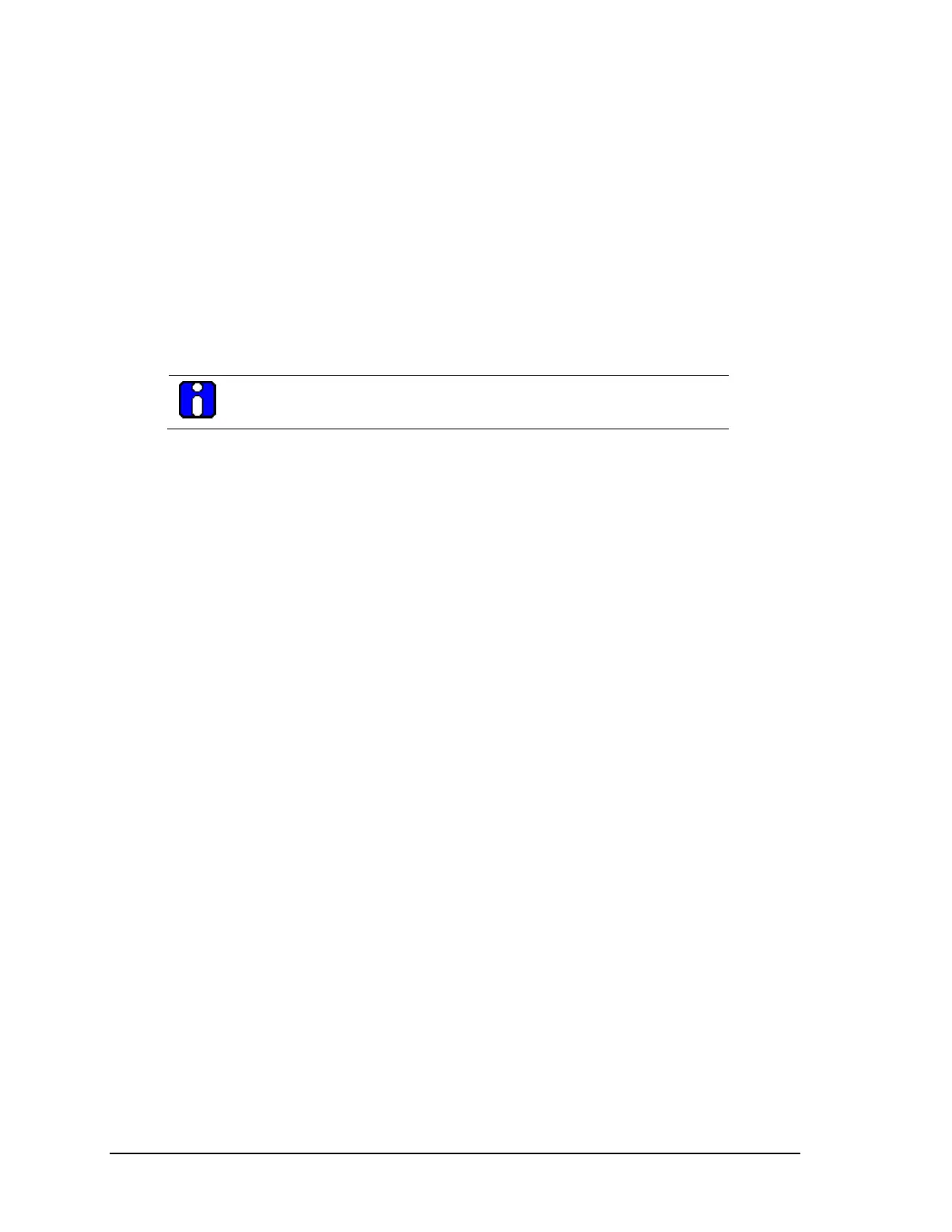Page 90 Foundation Fieldbus RMA803 Remote Indicator User's Guide Revision 4
6. RMA803 FF Remote Indicator Operation
6.1 Operational considerations
There are a number of considerations that must be noted when configuring a Remote Indicator to
operate in a fieldbus network.
LAS Capability
The Remote Indicator is capable of operating as the Link Active Scheduler (LAS). The LAS is a
fieldbus feature which controls traffic on the network, such as controlling token-rotation and
coordinating data publishing. This fieldbus function is active in only one device at any given time on
a network. Devices which can be designated as the LAS may be an operator station or a field device.
The Remote Indicator can be designated as LAS, in the event of a failure of the primary LAS,
control in the field could continue.
ATTENTION
Note that the Remote Indicator can be used only as “backup” LAS.
Special Non-volatile parameters and NVM Wear-out
All function block parameters designated as Non-Volatile (NV) in the FF specifications are updated
to non-volatile memory (NVM) on a periodic basis. NV_CYCLE_T parameter in the resource block
specifies this update interval.
To provide predictable restart behavior in the Remote Indicator, the following Non-Volatile
parameters are updated to NVM each time they are written over the fieldbus.
• MODE.TARGET for all blocks
• SP.VALUE for the PID block
Since these are user-written parameters, these additional updates to NVM contribute negligibly to
NVM wear out. However, users are cautioned to not construct control configurations where the
above parameters are written continuously (via a computer application for example) or at rates
greater than the NV_CYCLE_T interval. This consideration helps to minimize the possibility of
NVM wear-out.
In the case of MODE this must not be a problem. When users wish to provide set-points to the PID
block via a computer application, users should use RCAS mode with its corresponding set point
value RCAS_IN. RCAS_IN is updated only at the NV_CYCLE_T update rate and this mode
supports full shedding functionality and PID initialization necessary for a robust application.
Mode Restricted Writes to Parameters
Some block parameters have restrictions on having write access to them. These are specified in the
FF specifications. Writing to certain function block parameters are restricted based on the block’s
Target and/ or Actual mode.
6.2 Configuration of the RMA803 Remote Indicator using
Handheld (HH)
Figure 21 graphically represents the connection of the RMA803 Remote Indicator to the handheld.
Each Remote Indicator includes a configuration database that stores its operating characteristics in a
non-volatile memory. The handheld is used to establish and/or change selected operating parameters
in a RMA803 Remote Indicator database. The process of viewing and/or changing database
parameters is called configuration.
Configuration can be accomplished both online and offline with the Remote Indicator powered up
and connected to the handheld. The online configuration immediately changes the Remote Indicator
operating parameters. For offline configuration, Remote Indicator operating characteristics are
entered into the handheld memory for subsequent downloading to a Remote Indicator.

